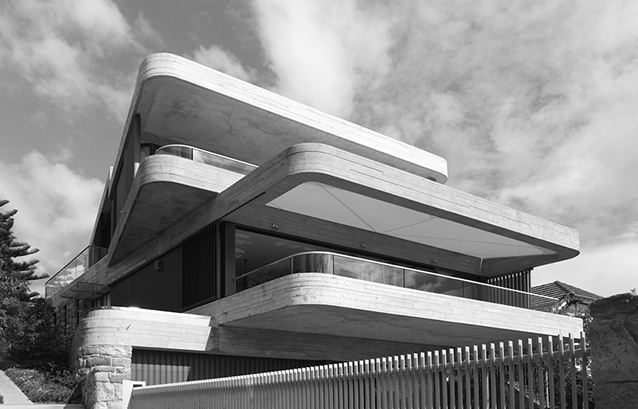Short of physically being inside a space, photography provides the best medium for communicating its nature to us. This week we speak with interiors and architecture photographer Justin Alexander to hear his thoughts on the craft.
Habitusliving (HL): What skills are particularly important for architecture and interiors photographers (compared to other types of photographers)?
Story continues below advertisement
Justin Alexander (JA): It’s important to realise that when shooting architecture you’re dealing with someone else’s vision. The architect has often lived and breathed the project for years before you’ve even seen it and it’s important for you to be sympathetic to their needs. Having said that, being immersed in a project for years can often give you tunnel vision so it’s important to be able to convey the wider spirit of the building to the viewer.
HL: What is your favourite aspect of architecture and interiors photography?
JA: A building won’t talk back or move while you’re trying to capture it.
Story continues below advertisement

Gordon’s Bay House (Habitus 19), image by Justin ALexander
Story continues below advertisement
HL: What is your least favourite aspect of architecture and interiors photography?
JA: It can involve very long days; starting before sunrise and finishing after sunset. It can involve moving a great deal of furniture and it’s not uncommon to have every piece of furniture sitting on the front lawn, only to bring just those pieces back into the building that are necessary for the photograph.
The Shed (Habitus 13), image by Justin Alexander
HL: How important do you feel photography is to architecture?
JA: Photography brings architecture to a wider audience. In terms of a interiors, especially with private houses there would never be an opportunity for the wider community to ever see them without photography.
HL: What are the most important factors to the outcome of a shoot?
JA: Good help and good light. There is never enough time to document a project so having someone that can work quickly and without to much direction is invaluable. Good light is also vital. Unfortunately what constitutes ‘good’ differs from project to project. Sometimes a building requires clear skies and hard shadows to accentuate its form, while at other times soft light is necessary to see into the building.
HL: What piece of equipment (other than the camera) is most useful for architectural photography?
JA: A spirit level, ladder and a bottle of windex.
HL: How important is the relationship between architects and photographers to the outcome of the shoot?
JA: It depends on whether you wish to work for the architect again. If so, then it’s vital. An architect rarely has the time to spend all day with you so it’s vital they trust your vision. A good relationship is one where the architect may attend for the first project but once they see you’re not going to butcher their work they leave you to do future projects on your own.
HL: What are the most common errors architects make when working with photographers?
JA: The first would be asking for angles that are impossible to capture. One architect regularly shows me perspective drawings then asks me to capture that perspective. Unfortunately this requires me to be 50 metres in the air and usually hanging over a cliff or above water. Asking for too many shots is another error. A good photographer is doing more than taking a picture, they are telling a story and this often requires an edited series of images, not just a shotgun approach where more is better.
HL: What are the most common errors photographers make when working with architects?
JA: Not taking into account the architect’s vision. Ultimately the photographer is documenting their vision and it’s vital to be sensitive to their needs.
HL: What has been your favourite house to photograph?
JA: That’s impossible to answer. I’m fortunate to work with great architects where each new project becomes my favourite house. What is common to all great houses however is that you feel you’re capturing something new, something you might not have seen anywhere else.
HL: Which architectural photographers do you admire?
JA: I find the most interesting interior and architectural images come from photographers who shoot other material apart from buildings. There is an American photographer by the name of Dwight Eschliman that shoots more still life than buildings, but his images of buildings are far more intimate and personal than most other architectural photographers I can think of.
Image by Dwight Eschliman for Dwell Dec/Jan 2012
HL: What advice would you give photographers wanting to start a career in architectural photography?
JA: There are lots of photographers out there so it pays to have a style. Something that is distinctive and helps other people recognise your work.
Justin Alexander
Justin’s work has featured regularly in Habitus Magazine and Habitusliving: